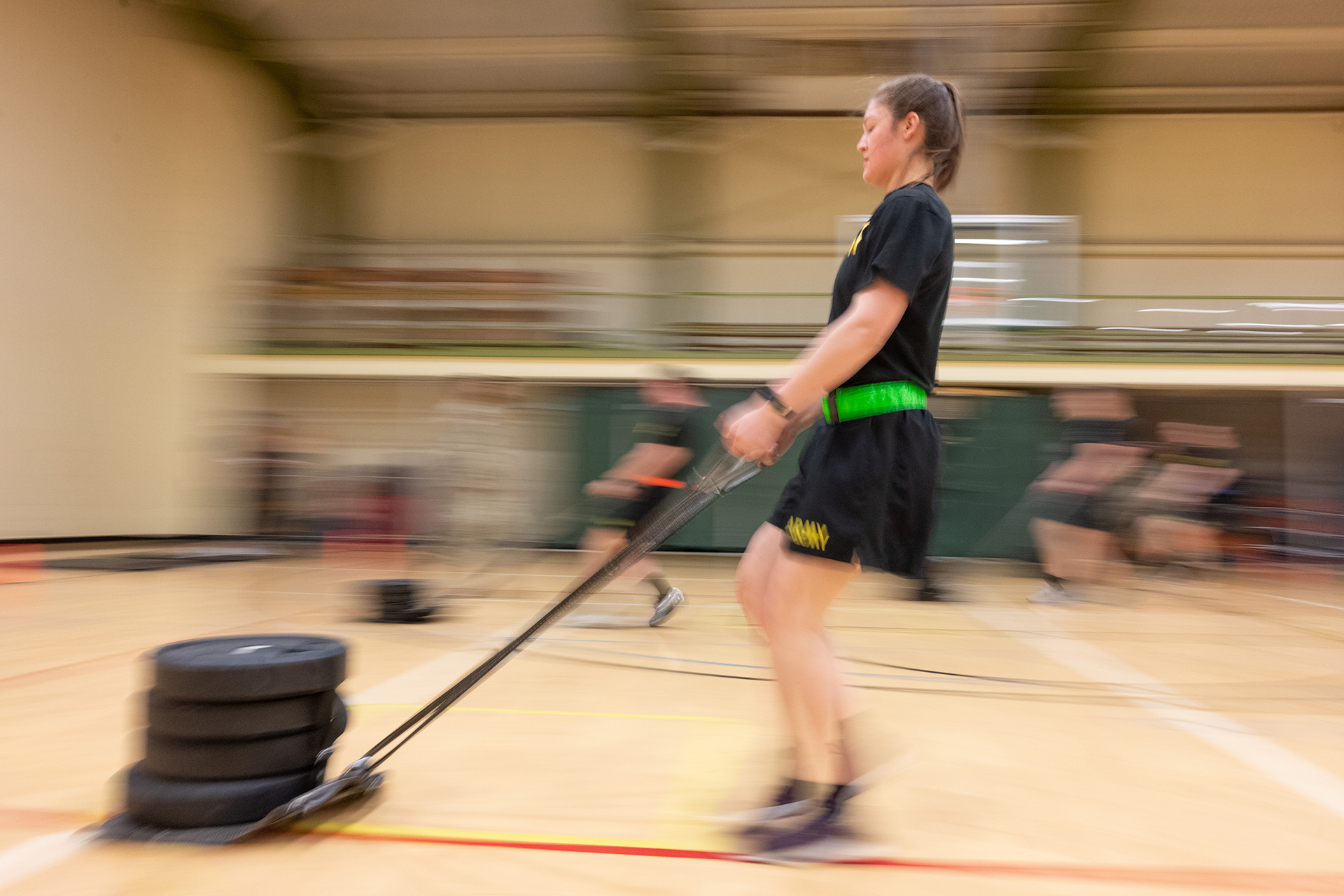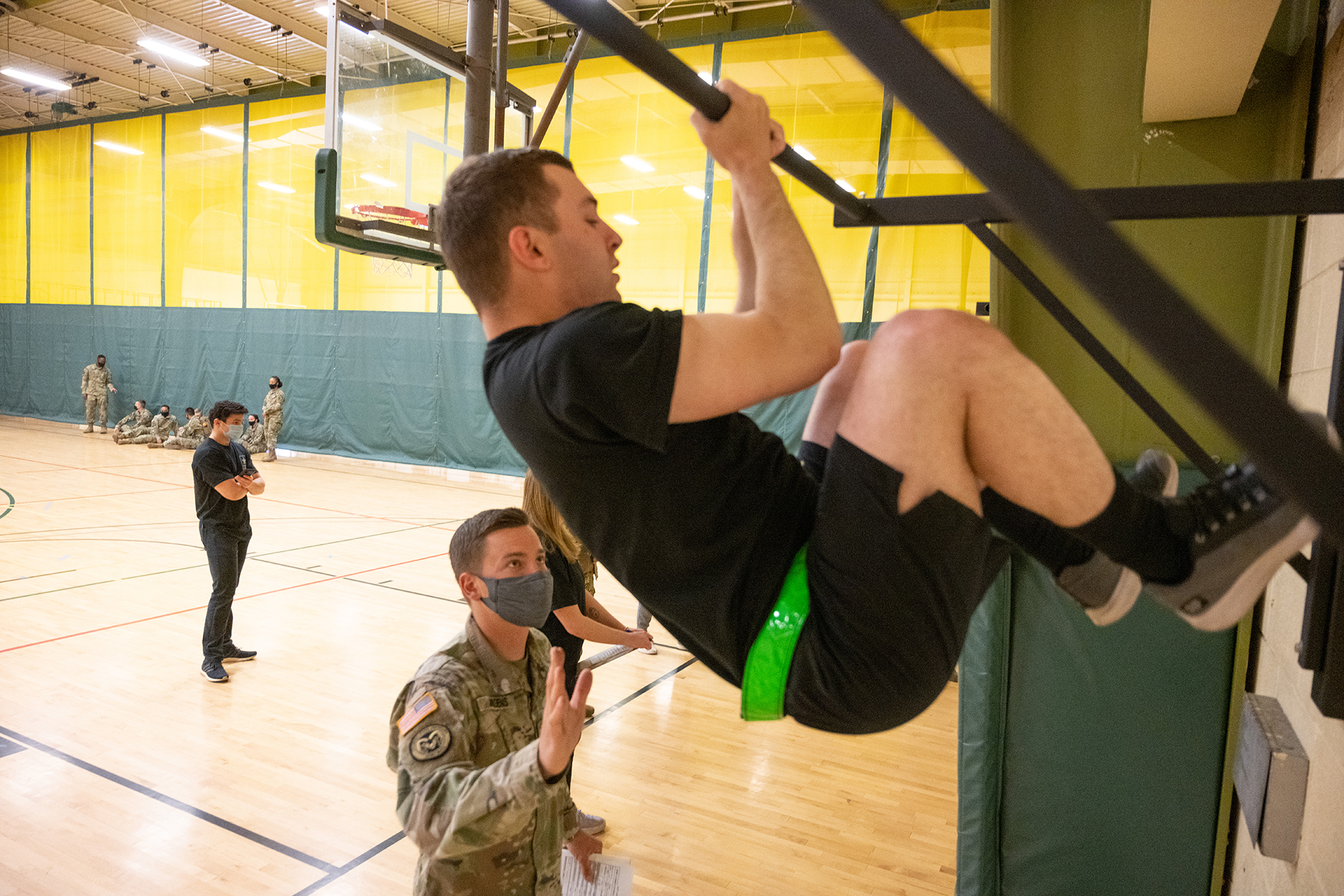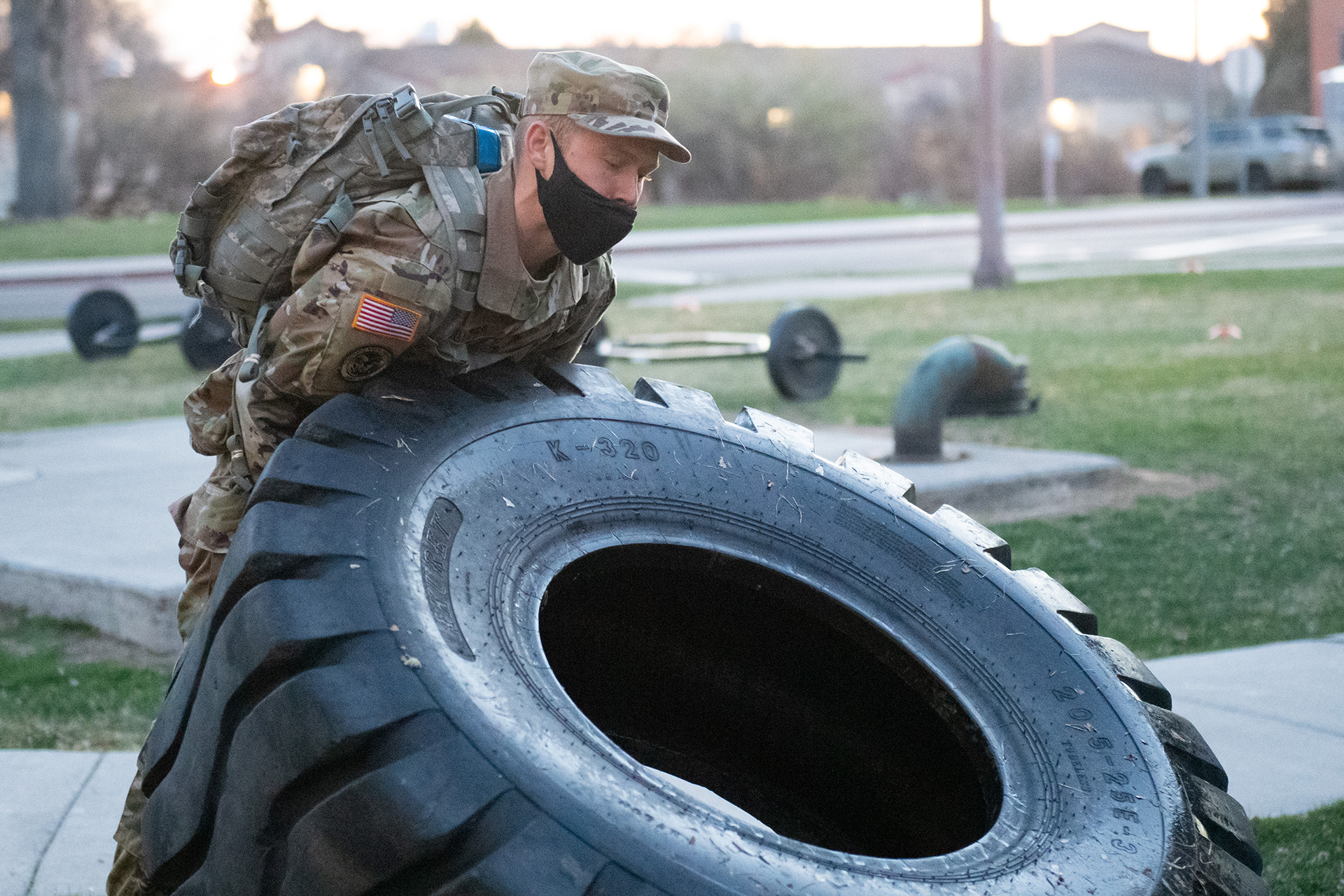Army Fitness
CSU Army ROTC cadets push it to the limit in fitness test story by Joe Giordano photos by John Eisele published April 19, 2021The hardwood floors of the Moby Auxiliary Gym were recently a sounding board for a cacophony of stampeding feet, clapping hands and encouraging voices as the strength and endurance of Colorado State University’s Army ROTC cadets were put to the test.
For nearly two years, CSU’s Army ROTC program has been taking part in a pioneering study with the Department of Health and Exercise Science to determine the best training regimen for the proposed new Army Combat Fitness Test, which involves a battery of deadlifts, farmer’s carries, sled pulls and much more.
The April 4 event was the latest stage in the ongoing study, a culmination of months of training under the guidance of Army ROTC and HES leadership.
Lt. Col. Matthew Tillman, a CSU alumnus who returned to his alma mater in 2020 to lead the Army ROTC program, was on hand to oversee the test and cheer on his cadets. He said he has noticed a vast improvement in cadets’ strength and overall fitness.
“They’re significantly more confident in what they’re doing,” he said. “They’re also very competitive with themselves. We have one cadet who is very proud of the 40-pound improvement she made in her deadlift. To see them really want to excel and their confidence grow is really exciting.”
Expanding the study


For the Spring Semester, researchers are examining training programs developed by HES faculty and the U.S. Army.
Improvement is at the heart of the CSU study, which expanded this year to help determine and establish the most effective cadet fitness regimen.
In 2019, CSU conducted a pilot study with 30 cadets that showed strong evidence that a full-body, hybrid training approach — aerobic and anaerobic training, weightlifting, body-weight exercises, plyometrics and high-intensity intervals — is far more effective than the traditional training regimens that focus solely on muscular endurance and aerobic exercise.
Researchers said the pilot study displayed positive outcomes for a hybrid training approach, which included improvements in ACFT scores (13% increase), VO2 Max (4.3 point increase), weight loss (2.4 kg decrease), and compliance of participants (96%).
For the expanded study, researchers are examining two training programs — one developed by HES faculty and the other by the U.S. Army.
Alissa Newman, a research associate who has closely worked on the study with Barry Braun, professor and HES department head, said they have been tracking cadet training data and have been noticing fitness improvements, though they are waiting to do more comprehensive data analysis in the coming months.
“We’re seeing improvements across the board,” she said. “We’re seeing increases in weight for the deadlift. We’re seeing decreases in time for the time-based events. We’re really pleased with how the cadets are progressing overall.”
“We’re seeing improvements across the board. We’re seeing increases in weight for the deadlift. We’re seeing decreases in time for the time-based events. We’re really pleased with how the cadets are progressing overall.”
— Alissa Newman, research associate
A significant update to this version of the study was the introduction of the CSU AROTC benchmark test. This test, a collaborative effort designed by Newman and Al Armonda, military science instructor and principal investigator for the ACFT study, seeks to prove the efficacy of the combat fitness protocol by actually requiring cadets to display “Warrior Skills” as if under actual combat conditions.
“We’ve seen strong correlations between events success in the ACFT and a likewise success in the benchmark,” Armonda said. “This indicates that we are on the right path with our training and efforts to produce combat-effective officers.”
One-on-one guidance


A new introduction is the CSU AROTC benchmark test, which seeks to prove the efficacy of the combat fitness protocol.
One of the keys to the CSU training regimen is the one-on-one guidance cadets receive from HES students. Cadets meet weekly with the students to track and monitor progress.
Adam Parol, a sophomore cadet studying geology, said working with the HES students has been beneficial, noting they have helped him improve his aerobic fitness.
For the sprint-drag-carry event — which involves a sprint, a 90-pound sled drag, and farmer’s carry with 40-pound kettlebells — Parol said he was able to shave 6 seconds off the maximum time.
“It’s great to be a part of an experiment,” he said. “I really like the sciences so having that scientific method approach to something so important as physical fitness is great.”
“It’s great to be a part of an experiment. I really like the sciences so having that scientific method approach to something so important as physical fitness is great.”
— Adam Parol, sophomore cadet
In the Moby Auxiliary Gym, Parol had just finished the leg tuck event and was celebrating with four other cadets the end of months of training. Among them was Abby Novak, a senior studying animal science.
For Novak, she said she had also seen improvements in her fitness and was glad the sprint-drag-carry event was in the past now as graduation nears.
“You want to prove this stuff to yourself as much as you want to prove it to everybody else,” she said. “It’s been huge working with the HES program. I’ve seen really big improvements in my strength and everything else that goes along with it. It’s been a lot of hard work.”